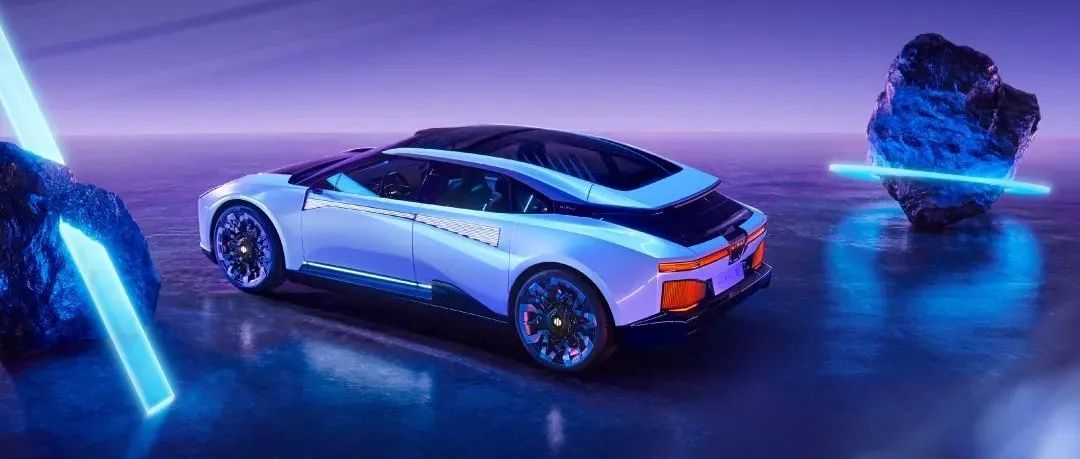Author: Chang Yan
It’s the end of the year, other than the sudden heavy snow in Beijing, there seems to be nothing that can go viral on social media.
Due to well-known reasons, business trips in the automobile circle have been mostly suspended recently, and there were not many exhibits causing a stir at the just-opened China International Import Expo.
Just when we were all going along with the previous rhythm, waiting for the Guangzhou Auto Show to end before the New Year, GAC Group released a “movie” out of the blue.
In the movie, a car claimed to have traveled through time from 20 years in the future was launched.
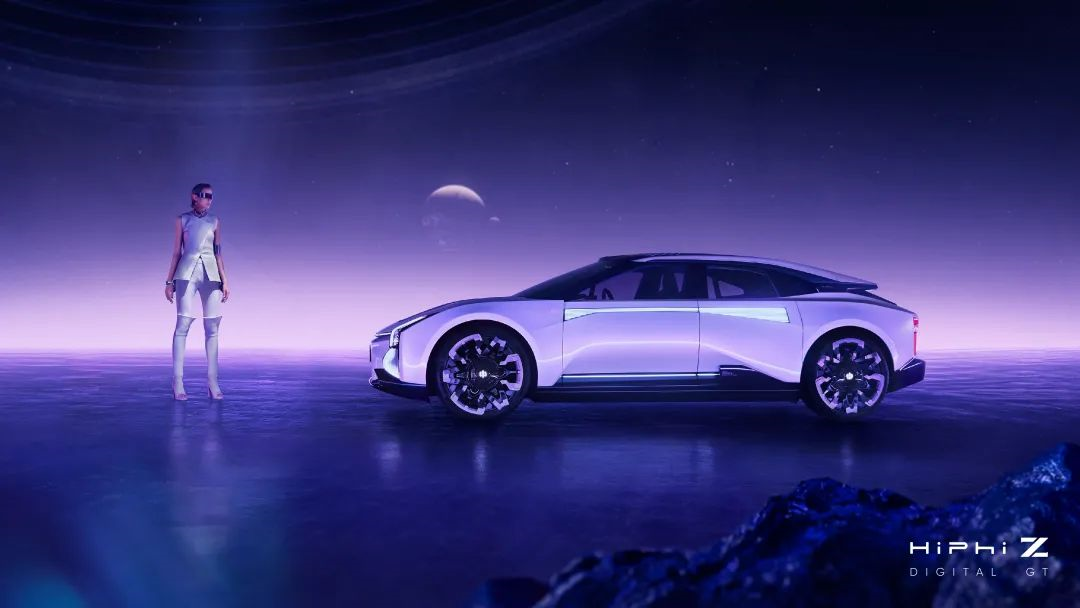
This is the GAC HiPhi Z.
After seeing this car up close yesterday, I haven’t put pen to paper until my plane landed in Beijing today, perhaps because I haven’t been able to come up with a simple judgment for this car in my heart. We can’t just blindly praise this car, as many parameters have not been finalized, but we cannot ignore it either, as it has many boundary-pushing and innovative elements that could have deep and far-reaching implications for the industry.
Exterior, and beyond, the future
I’ve always thought that the previous GAC HiPhi X was an excessively exaggerated, yet slightly lacking in futuristic elements, product.
This may be due to its relatively familiar proportions and all interaction elements being concentrated at both ends.

However, HiPhi Z, while still having distinctive GAC features in terms of body proportions and roofline direction, breaks through with a more pure design style.
Often times, we are only one step away from true futuristic elements.
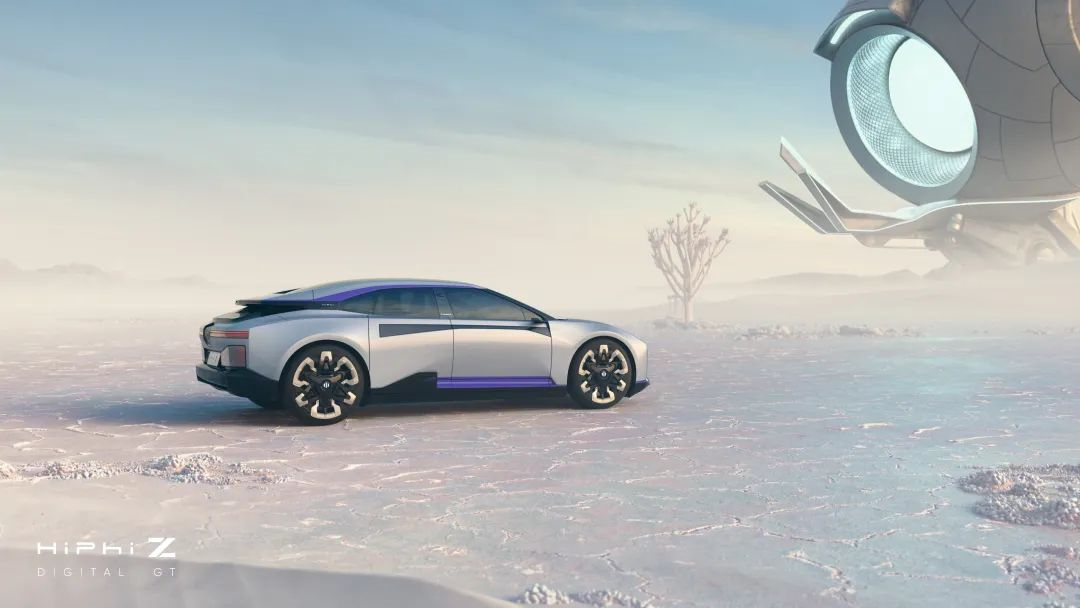
This is demonstrated where many branded concept cars have a strong futuristic feel, but mass-produced cars tend to take a step back.
HiPhi Z chooses not to take a step back.
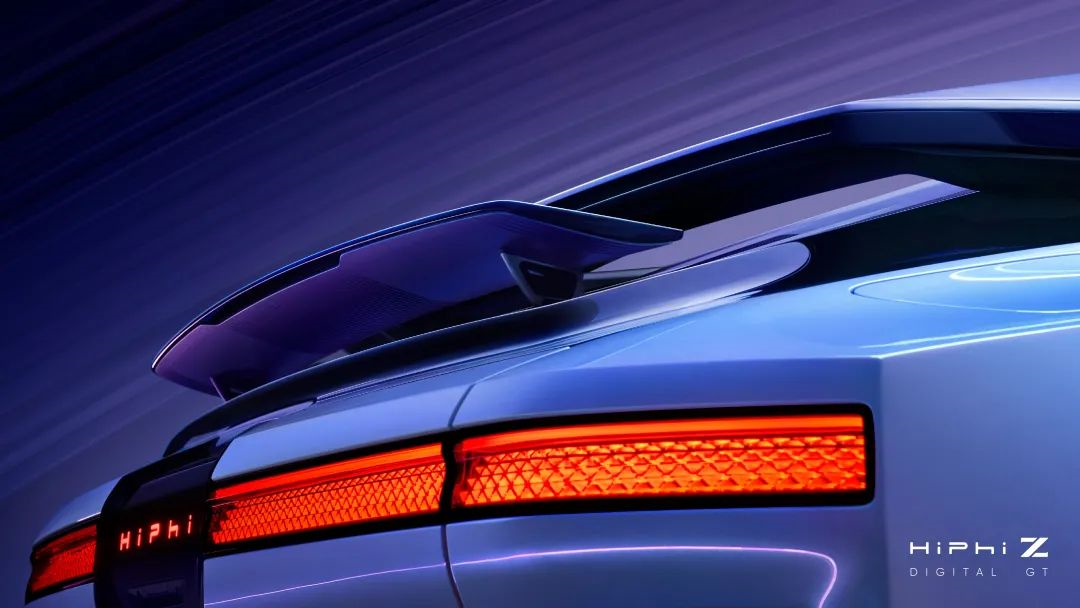
The sharp lines, striking purple decorations, unexpected four-sided lighting, and possibly non-mass-produced electronic rearview mirrors, all become organic components of this car’s futuristic elements.
 Here, there are still many things that previous car models had considered but not done, such as the use of soft material for the hubcap of this car. Apart from having a practical protection function, the more important part is that it breaks the mindset of “hubcaps must be limited within the scope of the tire,” and naturally creates a futuristic feeling.
Here, there are still many things that previous car models had considered but not done, such as the use of soft material for the hubcap of this car. Apart from having a practical protection function, the more important part is that it breaks the mindset of “hubcaps must be limited within the scope of the tire,” and naturally creates a futuristic feeling.
However, there are also some design issues that need to be solved in the production version, such as the extremely limited rear visibility of the current car. It is unknown whether the rear window design will be modified in the production version or will be solved through electronic devices.
Name change of the lamp factory
Previously, if a car manufacturer could understand the front and rear lamp group design, it could be called a lamp factory in the industry.
Even after a day had passed, when thinking back to the HiPhi Z, my mind was still full of the various lighting effects all over the car.
If RGB represents top-level performance for digital players, then their design ideas should be easily understood for this car.
Under the front and rear lights of the entire vehicle, programmable light groups are still preserved, which can dynamically change shape or even present facial expressions to interact with the driver’s thoughts.
The LED light strip that runs through both doors of the vehicle can create a “colorful” effect and can also convey messages to the driver through dot matrix text.
If you think this is already radical enough, as soon as you enter the car, you will immediately retract your judgment.
Inside the entire car, except for the seats, almost everywhere is a light, and even the soft material wrapping underneath the interior is a light.
Previously, ambient lights could only convey the atmosphere, but the ambient lights of HiPhi Z can create an atmosphere.
If the appearance of the HiPhi Z can be said to be a purely mecha style, there is still some room for discussion. The interior of this car is indeed like the operation space of a mecha.
Digital lifeAlthough the appearance and interior design account for half of the article, in yesterday’s live demonstration, the “vehicle digital robot” HiPhi Bot, which is mainly composed of the central control screen, occupied 90% of the demonstration section.
This is an abstract description that is difficult to express in words, but the visual impact is extremely clear.

For those who are familiar with smart cars, you can try to imagine a scene in your mind where the Tesla’s central control screen is like a robot’s head, with a flexible and movable robotic hand behind it, and give it the interactive posture of NIO NOMI. Then you can probably imagine the initial form of the HiPhi Bot.
The entire screen is your intelligent assistant, and its feedback and posture have surpassed the traditional voice anthropomorphism and become truly flexible and movable.
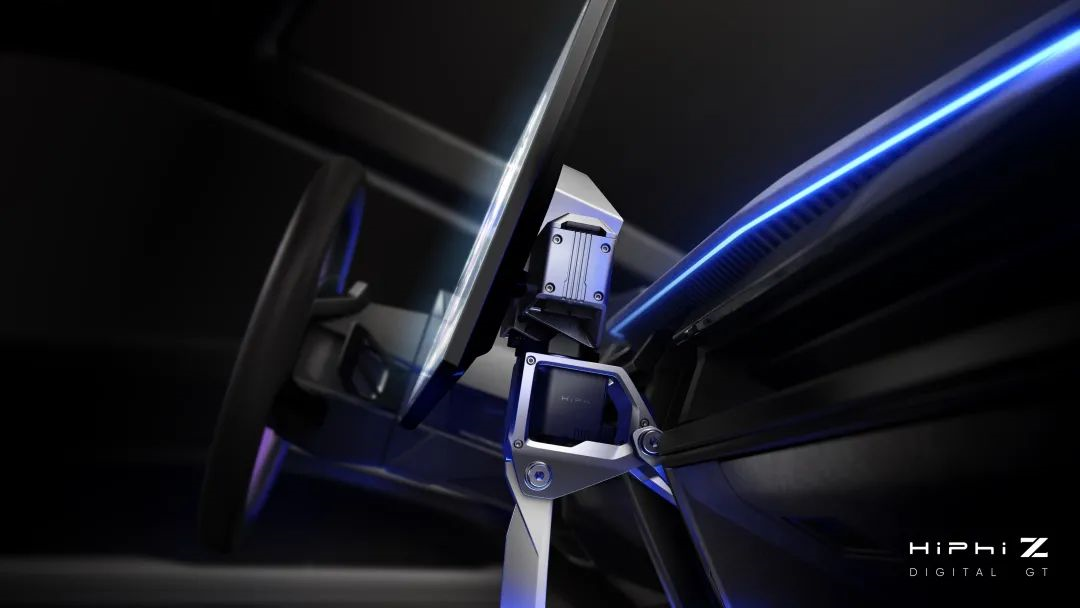
When the driver operates, the screen will turn towards the driver for communication and operation, and when someone comes to the co-pilot, the screen may turn towards the co-pilot to welcome them.
And all functional states will have customized interaction processes and visual designs. Depending on the situation, the screen will automatically select horizontal or vertical screens. Moreover, due to the mechanical and multi-dimensional software interaction capabilities of the screen, it can even display more widely in the spatial dimension.
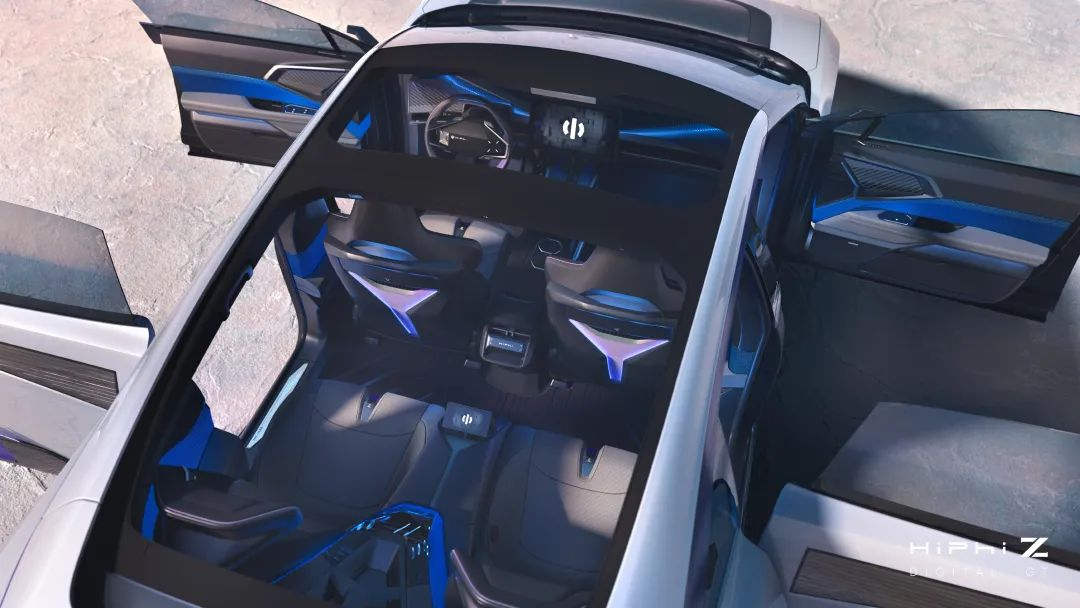
For example, when HiPhi Z enables the “rocket mode” representing high performance, the screen will rise up from the bottom, creating a runway-like feeling on the driver’s side, creating the ultimate sense of movement.
In the concept of Gaohe, HiPhi Z is called digital life because it may provide greater imagination space in the time dimension. After the evolution of a car’s AI, if you later switch to a new Gaohe vehicle, the cognitive habits of the previous system can even be inherited.
 # HiPhi Pilot Smart Driving Assistance System
# HiPhi Pilot Smart Driving Assistance System
HiPhi Pilot smart driving assistance system is the most detailed part of the overall release with respect to parameters. The NVIDIA Drive Orin-X is already a benchmark in terms of computing power for advanced level 4 self-driving cars in the year 2022. It may come as a surprise that HiPhi Z has adopted a radar-based perception scheme. The disclosed parameters include two forward-facing 8 million pixel cameras, one rear-facing 2 million pixel camera, five millimeter wave radars, one laser radar and four side cameras.

The system is double redundant in perception, computing, communication, braking, steering, and power. It theoretically possesses the hardware structure capable of Level 4 autonomous driving, but specific details need further release.
The Next Step of HiPhi Brand
From the perspective of design and configuration, HiPhi Z is destined to not be an inexpensive car. It is easily understandable that compared to HiPhi X, which focuses on riding experience, HiPhi Z is undoubtedly a model that emphasizes the sense of driving. They will smoothly form the dual flagship of the HiPhi brand.

Although the three-electric and size parameters of HiPhi Z were not given at the launch, it was easy to sense on-site that HiPhi Z is very likely to reuse the chassis platform of HiPhi X.
For HiPhi, doing so may have two purposes. Firstly, until making breakthroughs in electric drive, a new model can be launched as soon as possible to improve market layout. Secondly, it can decouple the electric drive and intelligence parts, allowing design and intelligence parts to move forward.

If everything goes well, following the delivery of HiPhi X, the two models may provide a guarantee of selling around 2,000 units per month after steady delivery next year.
But what is worth paying more attention to is the next step of HiPhi brand, including how to catch up with the demand gap in electric drive platform with the current technical strength, and how to determine the brand positioning after stabilizing the current price range.
 In the release of HiPhi Z, there was a number that impressed me. Ding Lei, founder and chairman of Gaohe Automobile, said that “currently, more than 95% of the production content of HiPhi Z has been locked in,” which means that HiPhi Z is destined to appear in next year’s competition of electric vehicles with a more futuristic feeling.
In the release of HiPhi Z, there was a number that impressed me. Ding Lei, founder and chairman of Gaohe Automobile, said that “currently, more than 95% of the production content of HiPhi Z has been locked in,” which means that HiPhi Z is destined to appear in next year’s competition of electric vehicles with a more futuristic feeling.
If HiPhi Z can replicate the success of HiPhi X, we will definitely see more “Back to the Future” in the Chinese market for electric vehicles.
This article is a translation by ChatGPT of a Chinese report from 42HOW. If you have any questions about it, please email bd@42how.com.
